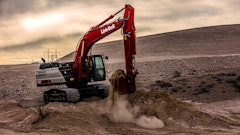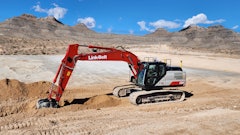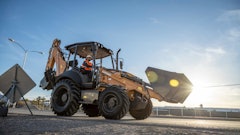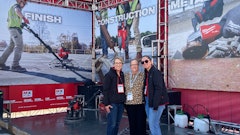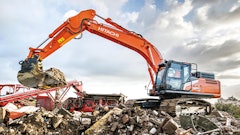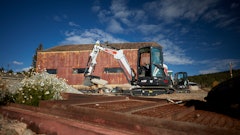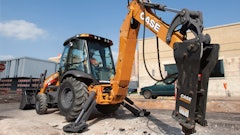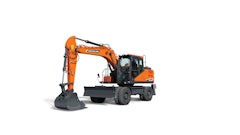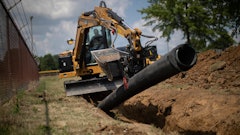
The Toronto landscape is changing, and GFL Infrastructure Group is one of the companies helping to reshape the skyline of Canada’s largest city. It provides demolition and hazardous materials abatement services through its demolition division, which employs about 150 people. The company has decades of experience in the industrial and commercial sectors, and a full range of specialized equipment.
Based in Toronto, the contractor has several Liebherr high-reach demolition machines that Travis Willison, vice president of the demolition division, says, “never let you down.”
“The automatic lube systems on them are fantastic. The hydraulic systems are amazing," he states. "One of the major benefits of the machine is it’s a single float, so anytime you need to pick it up to go somewhere, it’s quite easy.”
GFL recently expanded its equipment fleet by adding a Liebherr R 950 High Reach demolition excavator, which it will put to use on a hospital teardown project. These excavators are fast, efficient, safe and purpose built for selective deconstruction of large industrial buildings. The entire machine is manufactured by Liebherr, meaning all systems compliment each other and integrated into the design.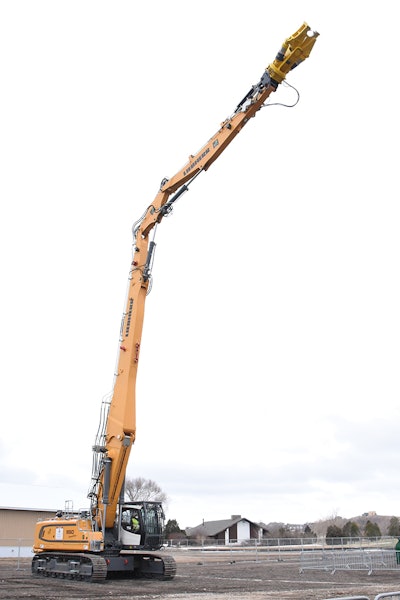 With a reach of 83 ft. and the capacity to handle a 7,720-lb. tool, the R 950 is large enough for major jobs, yet is easily transportable thanks to a hydraulically expandable undercarriage.
With a reach of 83 ft. and the capacity to handle a 7,720-lb. tool, the R 950 is large enough for major jobs, yet is easily transportable thanks to a hydraulically expandable undercarriage.
GFL also works with clients to implement job-specific, environmentally sustainable waste management, disposal and erosion control methods. Adding the R 950 to the fleet will help the company build and grow to the next level, says Willison. With a reach of 83 ft. and the capacity to handle a 7,720-lb. tool, the R 950 is large enough for major jobs, yet is easily transportable thanks to a hydraulically expandable undercarriage. The undercarriage width can be retracted to move to and from jobsites or expanded to create a wider footprint, which enhances stability.
Because they offer the ability to work from the ground, high-reach excavators can eliminate the need to have another piece of equipment on site to take down structures below 15 ft. The machine can work in a 360° radius, which is important on tight jobsites and makes installing demolition attachments easier.
“The industry has changed in Toronto a lot,” Willison comments. “Everything is getting tighter. There’s no space, no room to get at things. To be able to put a machine in that can hit, quite easily, 70 or 80 ft. and do work safely and efficiently in a tight spot is a bonus.”
Liebherr high-reach excavators have a plug-in boom section where the attachment is mounted, allowing the machine to be used for multiple tasks. A camera provides visibility to the operator when tools are placed inside structures and gives the operator a better view at all times when the end of the tool is out of sight.
High-reach machines have eliminated the wrecking ball. “The wrecking ball was a great invention for its time," says Willison, who has nearly 20 years of experience in the industry.."It was used on conventional cranes. There wasn’t a whole lot of hydraulics involved with it. It was a great concept but engineers have come a long way with these designs.”
Modern demolition machines are much safer, neater and quicker. “You can organize your material properly," Willison states. "The operator is a safe distance away from the building when he’s working. It’s the way of the future.”











